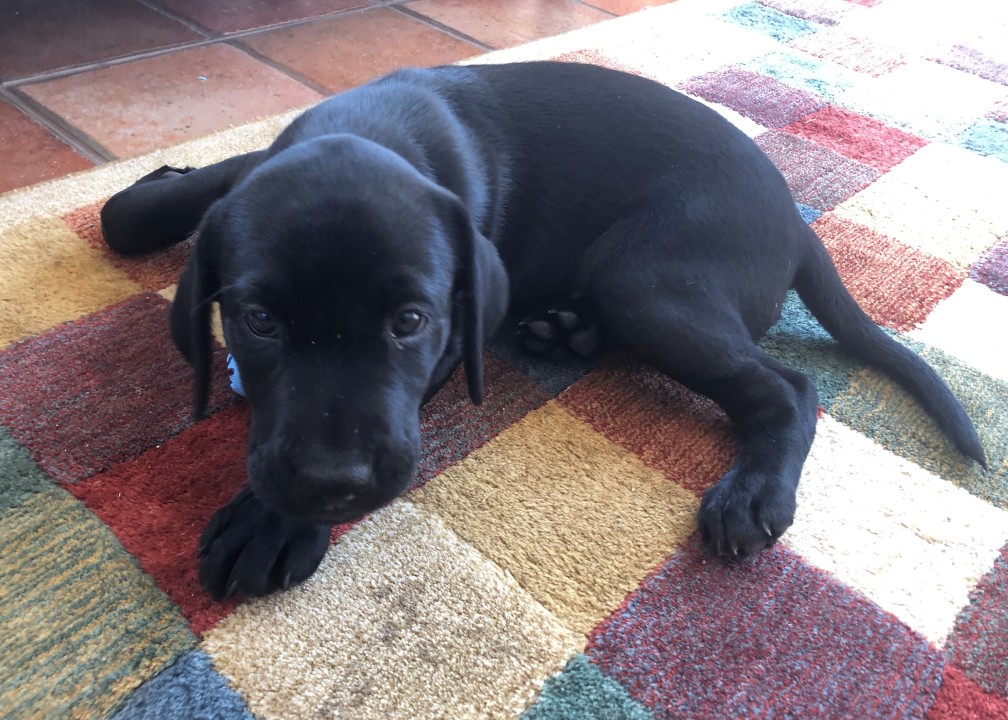
Choosing a chew - how hard can it be?
If you’re currently spending more time than usual with your dog, you might be thinking of treating them to some new chews or toys. Dogs love to chew. Actually, dogs NEED to chew. Puppies especially so. It’s an important behaviour for them, and it’s both natural and normal. That’s not to say it’s not frustrating for us dog owners if the items they choose to chew are furniture, shoes or your children’s favourite toys. I’m a little more sympathetic than usual to these challenges as we’ve recently welcomed a new pup into our family. Our 9 week old Labrador, Dorothy, is reminding me daily that the time we spent tidying all the children’s toys and shoes away into toy boxes and wardrobes before she arrived was time well spent! Some things can’t be tidied away though, and she’s become particularly fond of chewing the corner of the rug on our kitchen floor! Luckily, although I do love the kitchen rug, I love Dorothy more. But it’s clear that if dogs and puppies need to chew, they must be given safe toys and chews of their own to get their teeth into.
Dogs’ teeth – how strong are they, really?
Those puppy teeth. Those sharp little daggers which can do damage to skin and clothing and anything they come across (my hands right now are testament to this, though we’re working hard to stop this normal but undesirable behaviour). It’s understandable that many people think that dogs’ teeth are strong almost to the point of being indestructible. Surprisingly that’s not the case. Though their jaws are capable of applying incredible force, their teeth – even the permanent teeth of an adult dog - are more fragile than you might think. Their tooth enamel is up to six times thinner than in humans. This means they can fracture (break) their teeth by chewing on things that are simply too hard.
Because the blood vessels and nerves within the tooth are closer to the surface than in humans, tooth fractures in dogs are often extremely painful. Even so, they can be frustratingly hard to spot. Dogs are masters at hiding pain and distress and it can be tricky to notice they have a problem unless you examine inside their mouth thoroughly - not always easy at home. The first signs that something has gone wrong might include a reluctance to eat, or listlessness due to pain. These signs are common to many other health issues so a tooth fracture may not be revealed as the cause until a thorough veterinary examination, potentially under general anaesthetic, can be performed.
Mars Petcare supported some recent research from the University of Pennsylvania School of Veterinary Medicine which confirmed that a dog’s jaws are easily powerful enough to break their teeth if they are allowed to chew on something that’s too hard.
Making the right chew choice
But dogs DO need to chew so how can we choose something that’s safe for their teeth? It’s well known that stones and bones are capable of causing damage to dogs’ teeth. These shouldn’t be given to dogs and if your pup comes across any, be sure to discourage them from chewing these things. But what about items designed specially for them to chomp? There are so many dog chews and toys available, but some have the potential to damage dogs’ teeth because of their texture and hardness, and the immense forces applied when the dog chews.
Any chew or toy that is not bendy and malleable, or doesn’t soften very quickly and easily when chewed, could cause a painful tooth fracture. When you look at something you’re thinking of giving your dog to chew, imagine taking a hard bite of it yourself (though please don’t actually do it!). If the thought of it makes you wince, it’s likely too hard for your dog to chew. Another good tip is to try digging your thumb nail into it. If it won’t go in, it’s probably too hard. Although this is not a hard and fast guarantee, it’s a useful rule of thumb (pardon the pun).
If you’re unsure whether something is safe, ask your vet for advice. As for Dorothy, I bought her a selection of rubber toys, some of which can have kibble or treats put inside. She loves these as they give her something to keep her busy, and I feel happy knowing her teeth aren’t being put at risk. But despite all the toys and activities, she still finds the kitchen rug as irresistible as ever.




Veterinarian, Veterinary Advisor and Pet Lover. Mars Petcare Australia.
3yWelcome gorgeous Dorothy! 🐶💕 Great read Jo 😊